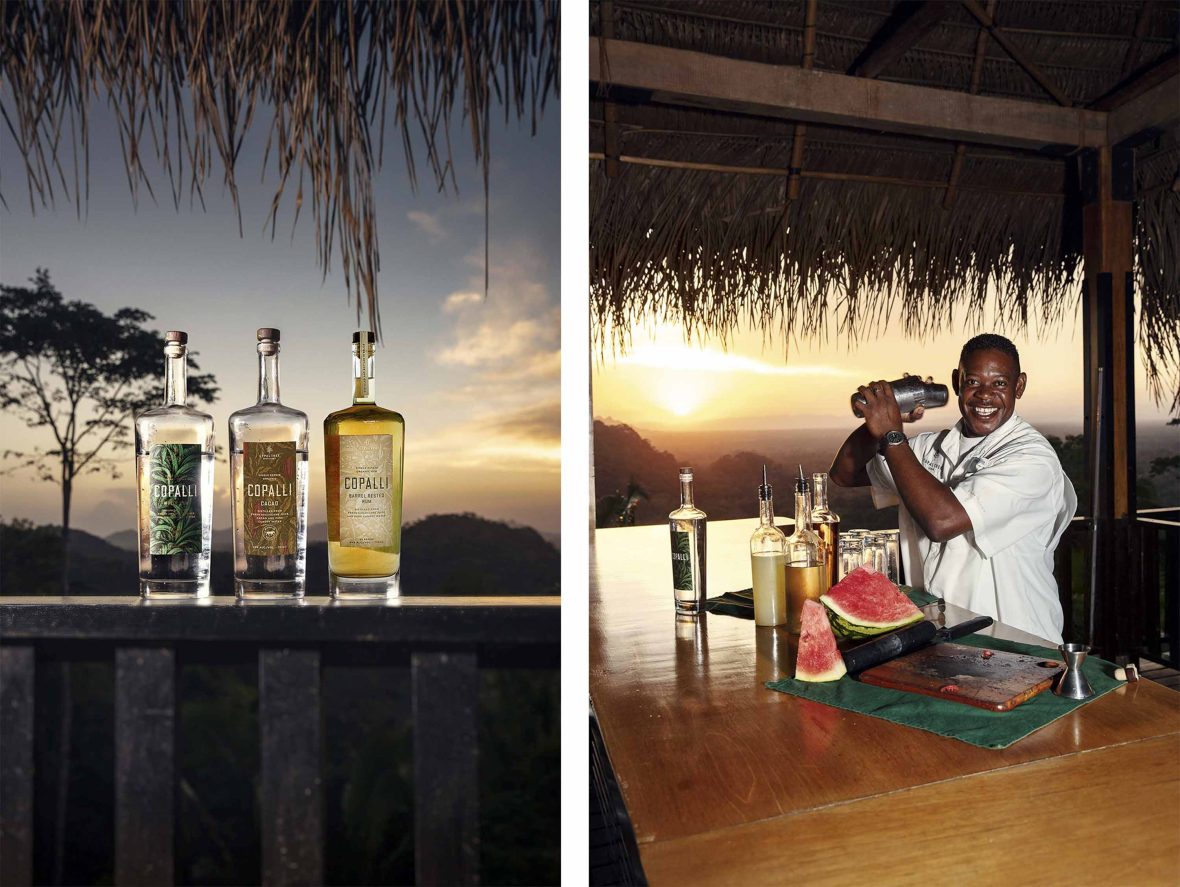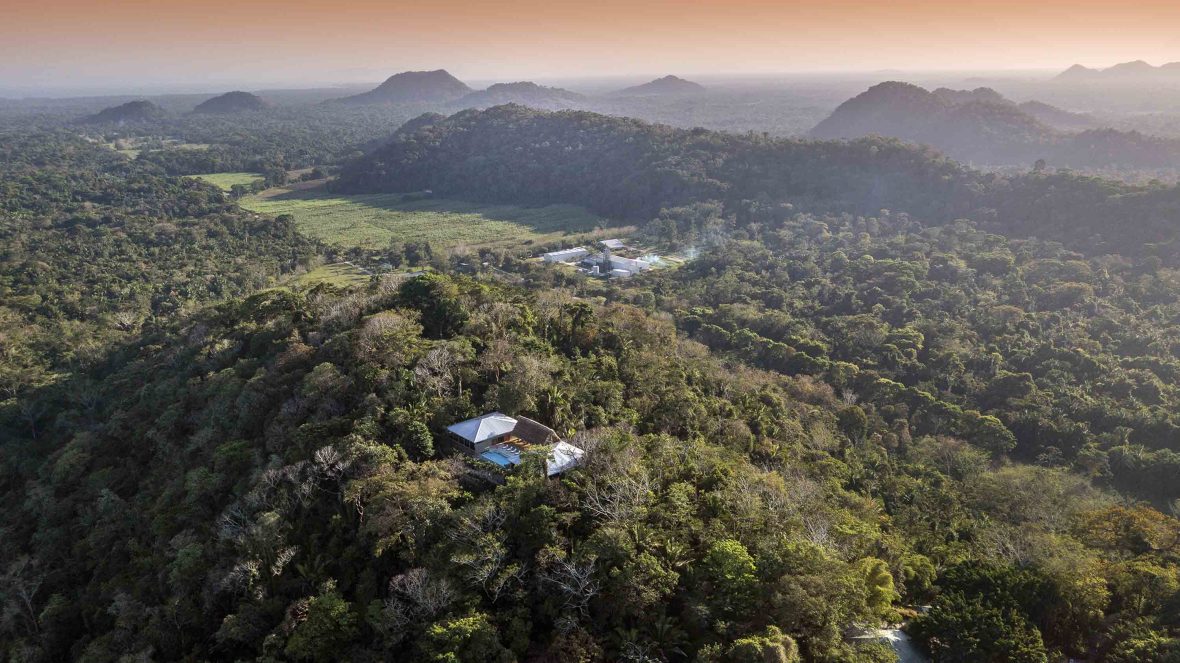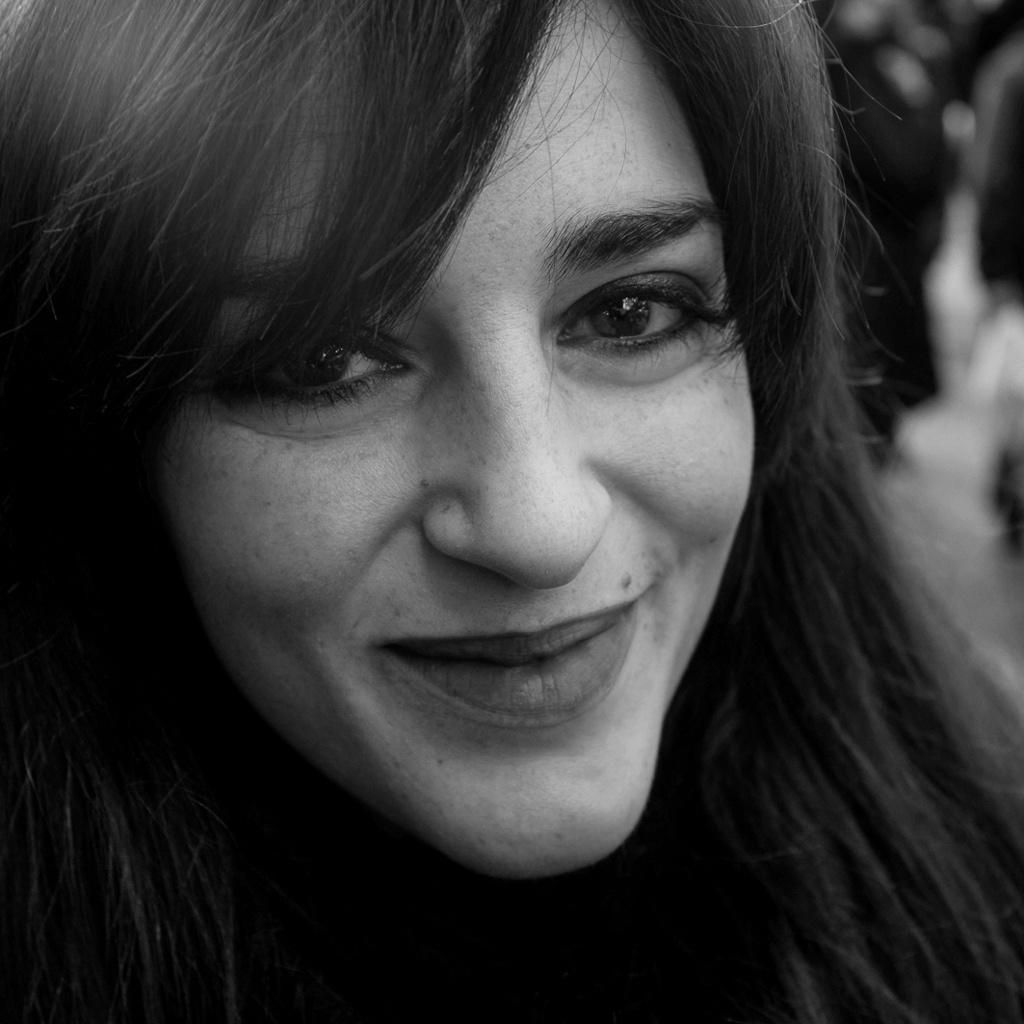
While seated at a bar in Belize, perched over the rainforest, writer Clay Dillow explores the redemptive nature of rum—and the environmentally-minded folks who distill it there.


While seated at a bar in Belize, perched over the rainforest, writer Clay Dillow explores the redemptive nature of rum—and the environmentally-minded folks who distill it there.
The secret to a perfect mojito, Ducky tells me, is knowing what not to do. He’s standing behind the bar at the appropriately named Rum Bar at Punta Garda’s Copal Tree Lodge in Belize. Ducky—who goes by a single name, like Prince or Zendaya—piles ice, simple syrup, fresh lime juice, and a healthy dose of Belizean white rum into a cocktail shaker. Almost any mojito recipe you come across instructs you to muddle some mint in the tin first (it’s typically step one). Ducky instead adds a generous handful of fresh un-muddled mint at the end, just before capping it and giving it a vigorous shake.
“Muddling makes it bitter,” he says, pouring the contents of the tin into an ice-filled glass and topping it with soda. “Just let the ice do the work.”
The Rum Bar sits high on a hillside in the Belizean rainforest, overlooking the jungle canopy and beyond that, some 100 meters below, the Rio Grande as it snakes toward the Caribbean. Soundtracked by the gravelly drone of howler monkeys, frequented by a colorful cast of avian regulars and bathed in a balmy Caribbean breeze, the bar offers an immersive multi-sensory experience—the sort of ambiance that imparts a deeply felt sense of place. So I’m unsurprised to learn that the mojito that arrives in front of me—balanced, pleasantly herbal, and decidedly not bitter—is imbued with a certain degree of terroir as well.

Provisioned with ingredients from its on-site farm and well-stocked with rum also produced on the property, the Rum Bar takes the notion of “drink local” to its apogee. Virtually everything in my glass originated within a kilometer or two of my barstool, from the mint to the citrus to the rum at its core. The mojito may have originated in Cuba, but this particular mojito is Belizean through and through.
Of all the local ingredients Ducky deploys in his cocktails, the locally crafted Copalli rum is easily the most significant. Belizean rum maintains a very small footprint outside of Belize. Most of the rum made here stays close to home, and those rums that do find their way to faraway markets are typically of little renown.
With the sun setting, the heat of the day fading, and an ice-cold beverage in hand, it’s difficult to put your finger on what, exactly, makes drinking here such a transcendent experience.
The first small batches of rum that came off the stills at Copalli’s distillery in 2015 marked the beginning of an ambitious effort to change that. With its organically produced, single-estate rums, Copalli aims to build a globally recognized premium rum brand in a place that has no global reputation for producing premium rum.
The Copalli distillery joins Copal Tree Lodge and its organic farming operation in an unusual tripartite enterprise that is now the largest private employer in Southern Belize and a major economic driver for the country’s southernmost district of Toledo. Organized under a trust that supports various community development and conservation initiatives in the region, the larger Copal Tree operation functions as a kind of virtuous cycle; eco-tourism funds conservation efforts and discourages deforestation which, in turn, helps preserve Belize’s rainforests and marine habitats that draw tourism.

Establishing a rum distillery within that framework doesn’t simply provide an additional revenue stream to fund Copalli’s non-profit endeavors. The broader idea, Copalli master distiller Ed Tiedge says, is to create a sustainable, economically viable operation that provides long-term employment and prosperity to the region. Build a piece of profitable economic infrastructure that creates value within the existing rainforest, the thinking goes, and you blunt the motivation to extract value from the rainforest in other ways.
Tiedge joined Copalli following a 10-year stint running his own distillery in Westchester, New York, partially out of a sense of adventure but also because the job felt meaningful. “If this distillery succeeds and lives on, the product I created will be one of the reasons it’s here,” he says. “I get a little bit of legacy on that. But certainly, Todd gets the lion’s share—it was his capital and his vision.”
“Todd” refers to Todd Robinson, a financier and sportsman who set all of this in motion more than two decades ago. While fishing in some of his favorite waters off the coast of southern Belize, Robinson found the fish weren’t biting. Ongoing logging in the nearby rainforest had sent silt and soil run-off flooding into the Rio Grande and out to sea, fouling the reef that sustains the local marine ecosystem.
Robinson first tried to solve this problem using his sizable financial heft, buying up thousands of acres of land along the Rio Grande (he would eventually own some 22,000 acres of rainforest) and declaring it a private nature preserve. But timber is big business in Belize and a primary source of employment for the surrounding community. Forcing the commercial loggers out of the rainforest put many locals out of work, creating both economic hardship and a labor pool at the ready for the illegal logging crews that swiftly moved into the area.
Robinson quickly realized any long-term solution would have to both preserve the rainforest and create economic value for the surrounding community. Working with local leaders and activists, he sketched out a plan for a sustainable luxury eco-tourism venue and sprawling organic agricultural operation, naming the property “Copal Tree” after a local species significant to Indigenous Maya culture.
The accommodation now offers 16 suites (and one three-bedroom villa), two swimming pools, and one superlative cocktail bar. The 3,000-acre USDA-certified organic farm produces all manner of citrus, fruits, greens, herbs, vegetables and coffee as well as chickens, ducks, goats, and pigs. Cacao trees provide the raw material for a bean-to-bar chocolatier, and a growing number of coffee plants supply fresh coffee to the lodge.
If Copalli rum can crack the global spirits market—and that remains an “if”—its environmental and social impacts will grow apace.
Meanwhile, 75 acres of sustainably grown organic sugar cane—both red and black varieties—provide the inputs for the Copalli Rum distillery. On a sweltering June morning, Tiedge is shouting above the din of conveyor belts, cane presses, and massive industrial shredders, explaining what each machine does and the role each plays in a largely circular production process. During the sugar cane harvests, the distillery runs non-stop during daylight hours, processing the cane as quickly as it comes in from the fields.
“We’re trying to preserve the flavor of the juice,” Tiedge yells over the mechanical hum. That means pressing the cane and starting fermentation as quickly as possible, typically within just two hours of harvest. The aforementioned shredders convert the pressed cane stalks into fibrous biomass that’s burned to power the stills, he says, obviating the need for fossil-derived heating fuel. The resulting ashes—along with a nitrogen-rich liquid byproduct of the distilling process known as “vinasse”—are returned to the cane fields and spread as fertilizer. Very little goes to waste. The distillery even has a rooftop cistern system that collects rainwater for proofing down the finished rum, not that the surrounding rainforest lacks water sources.

Though logging (both legal and illegal) continues to take its toll on the rainforest, the lodge and distillery have made a notable impact on the region, not least by bringing awareness to the problem. “Growing up here, we sometimes take it for granted—the marine biodiversity, the flora, the fauna,” says Waluco Maheia, assistant manager at Copal Tree Lodge. “But we see people coming to Belize to appreciate the nature, and we know we need to do more to protect it because it directly impacts our economy.”
Aside from his role at Copal Tree Lodge, Maheia serves as Copalli Rum’s global brand ambassador and sits on the village council in nearby Punta Gorda, the seaside capital of Toledo District where logging—some of it legal, much of it not—has long been a dominant source of employment. His father, Wil Maheia, is a prominent environmental activist in the region who also played a central role in shaping Copal Tree’s eco-social model, an effort that’s paid dividends now that proceeds from both Copal Tree and Copalli are flowing into conservation efforts. For instance, a recently enacted ban on the use of gillnets—indiscriminate commercial fishing nets that have proved especially harmful to sea turtle populations—in Belizean fishing waters received significant financial support from Copal Tree and Copalli, Waluco Maheia says.

If Copalli rum can crack the global spirits market—and that remains an “if”—its environmental and social impacts will grow apace. (If the distillery is sold, proceeds from the sale will remain in the trust to provide income in perpetuity.) The brand is both hurt and helped by the fact that consumers in major spirits markets like the US and Europe have little familiarity with Belizean rum, giving Copalli a tough hill to climb in terms of education but a great deal of freedom to define “premium Belizean rum” by its own terms.
Copalli rum is more like a rhum agricole, though Copalli neither uses that descriptor (a term for the style of cane juice-based rums originally produced in the French Caribbean) nor pursues the earthy, vegetal style typical from places like Martinique and Guadeloupe. Copalli’s dominant note is lighter and more tropical with just a hint of grassiness. Its barrel-aged rum includes some additional notes of vanilla and baking spices, and tobacco, while its unique cacao rum—infused with roasted cacao nibs produced on the farm—layers in some rich cacao flavor.
At the Rum Bar, Ducky’s long experience building cocktails around Copalli’s flavor profile manifests itself in a menu of seemingly straightforward cocktails—various smashes, mojito variations, and his eponymous Ducky Daiquiri. With the sun setting, the heat of the day fading, and an ice-cold beverage in hand, it’s difficult to put your finger on what, exactly, makes drinking here such a transcendent experience.
Maybe cocktails simply taste better in the rainforest. Maybe they taste better when they’re from the rainforest. Maybe they’re at their absolute best when they’re for the rainforest.

Clay Dillow writes about wine, spirits, and food, as well as the people and places behind the things we consume. His work also appears in Fortune, Popular Science, CNBC, National Geographic Travel, USA Today, and elsewhere. He lives in Brooklyn with his surfboard.






Can't find what you're looking for? Try using these tags: